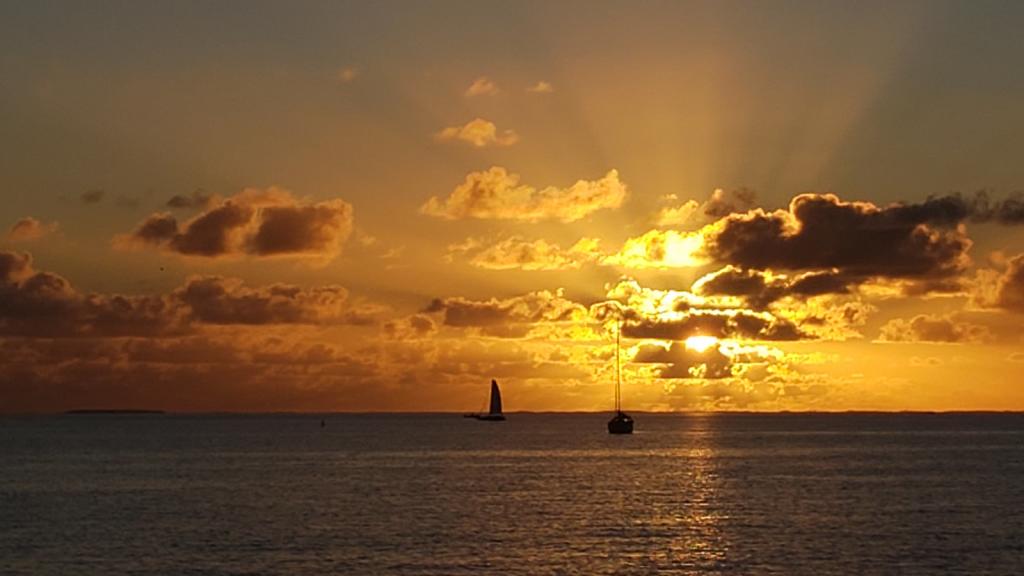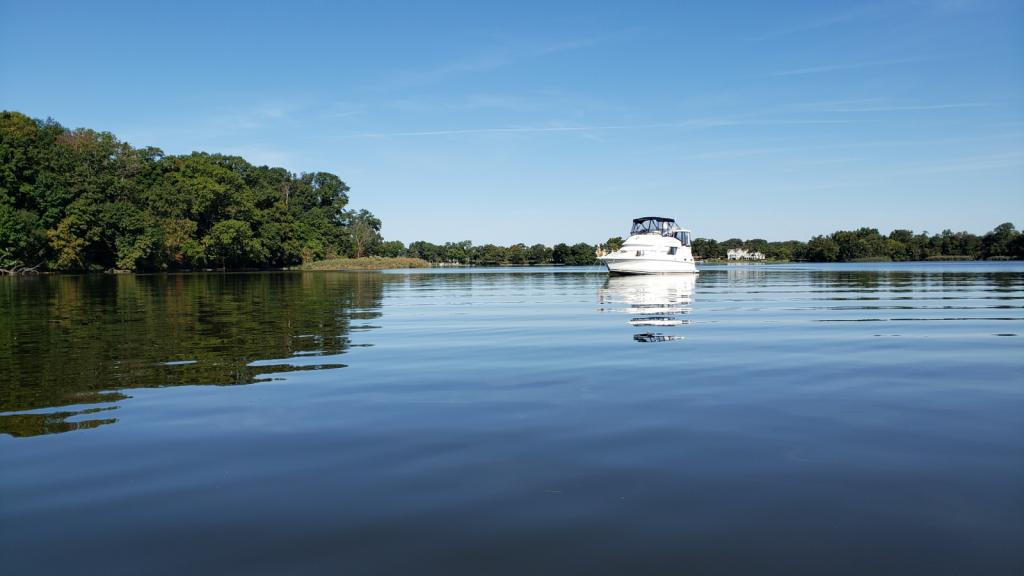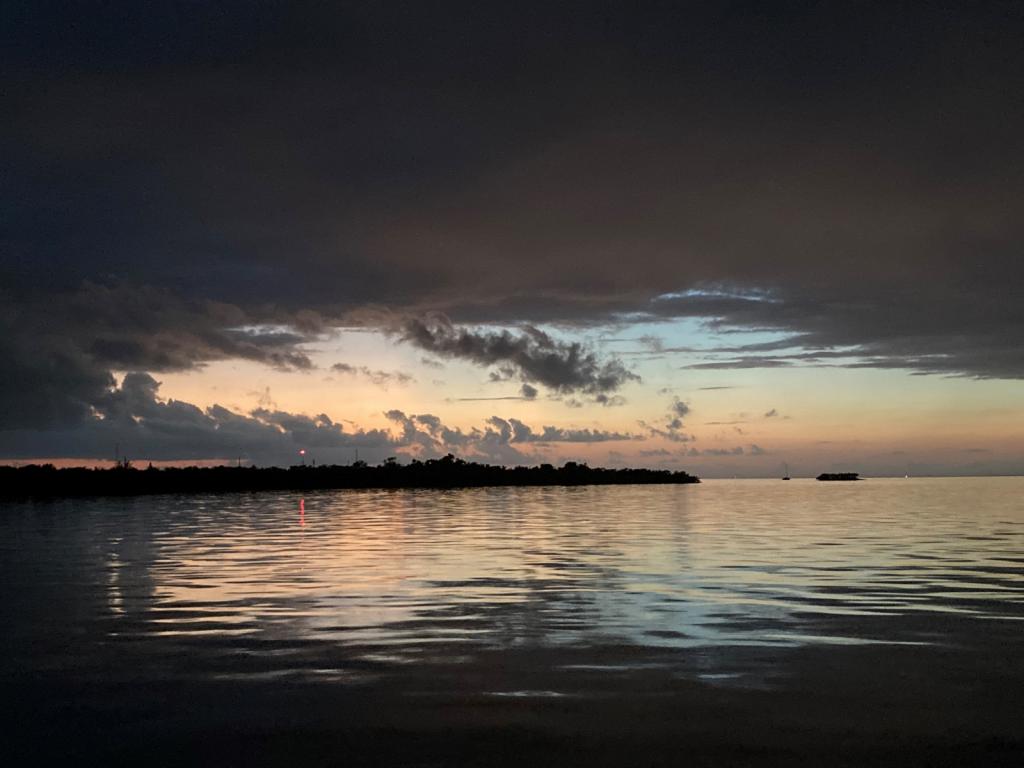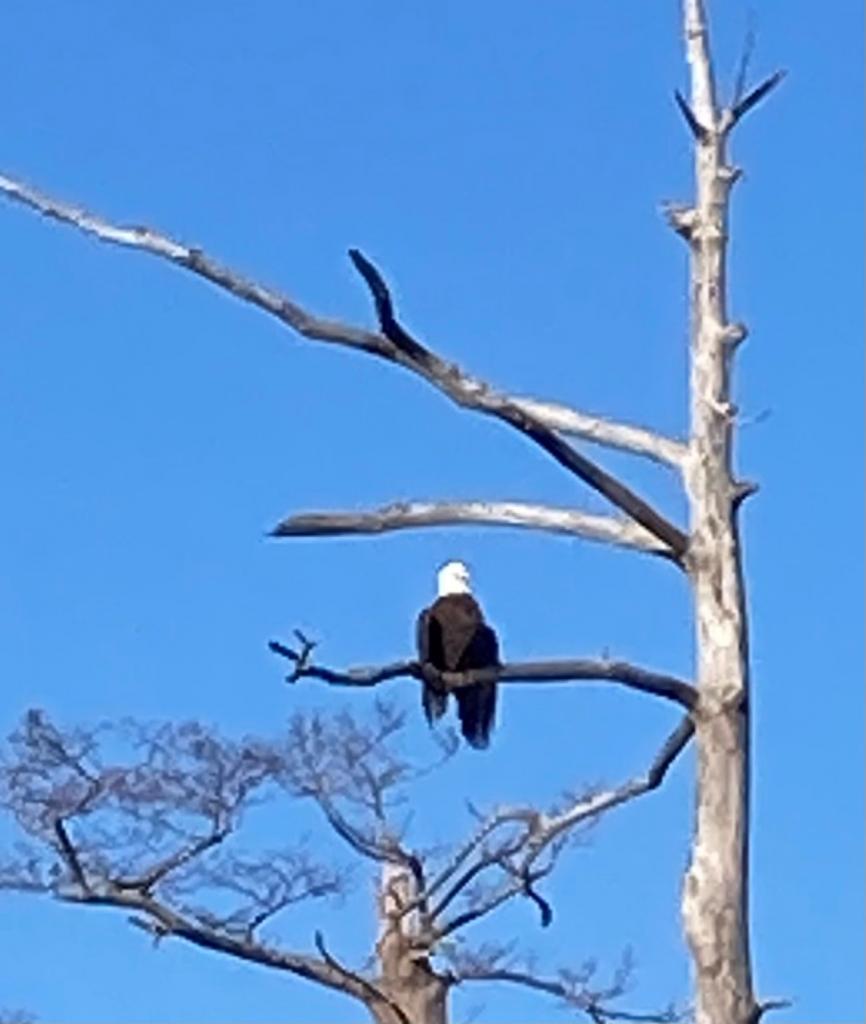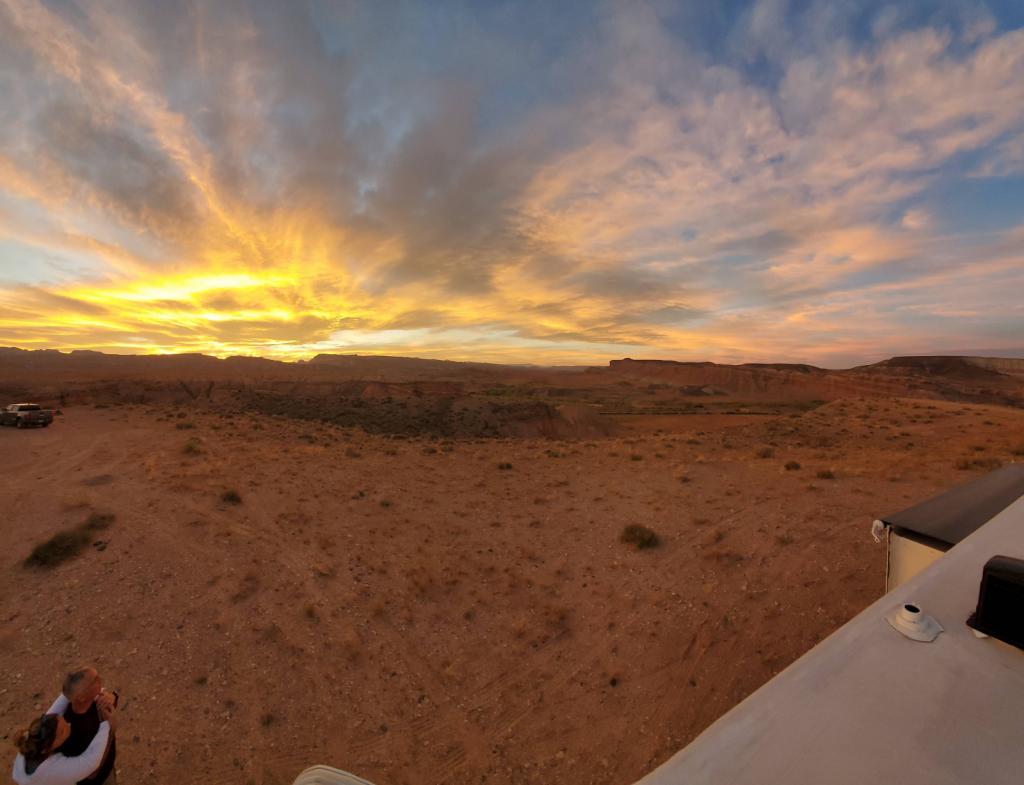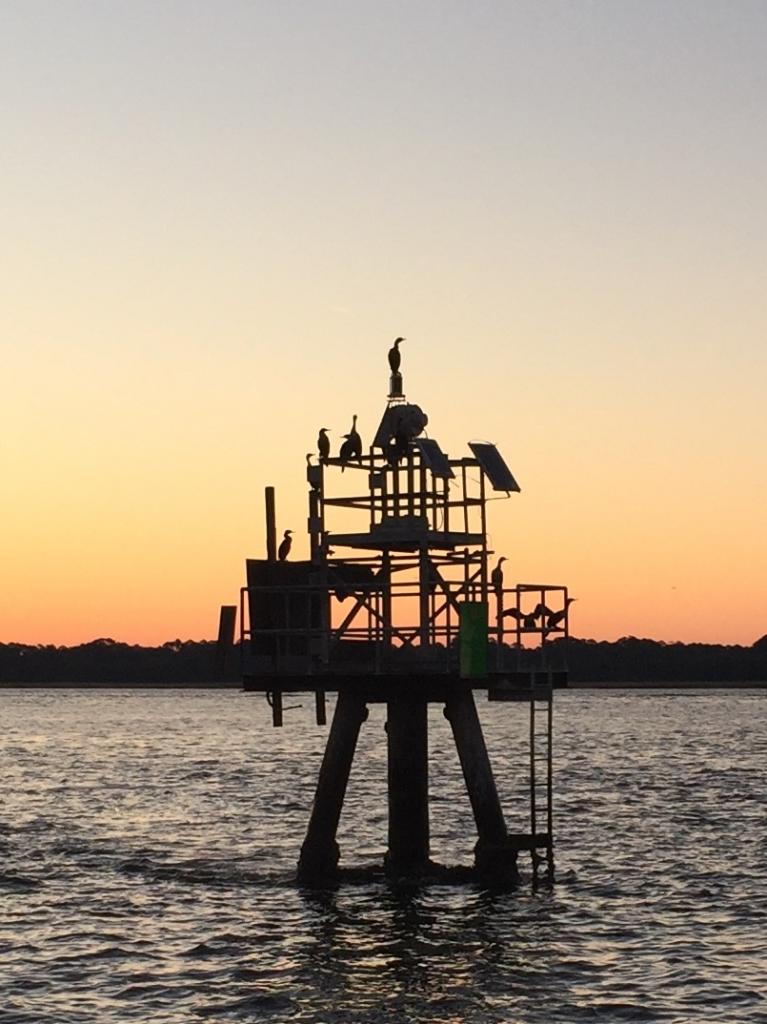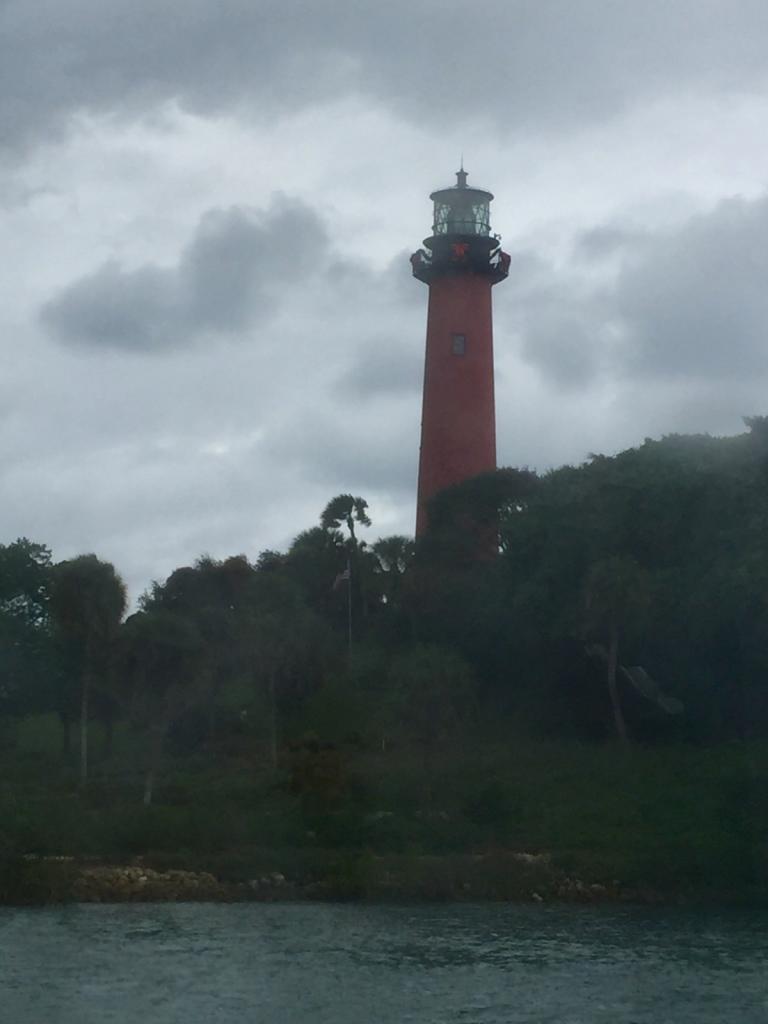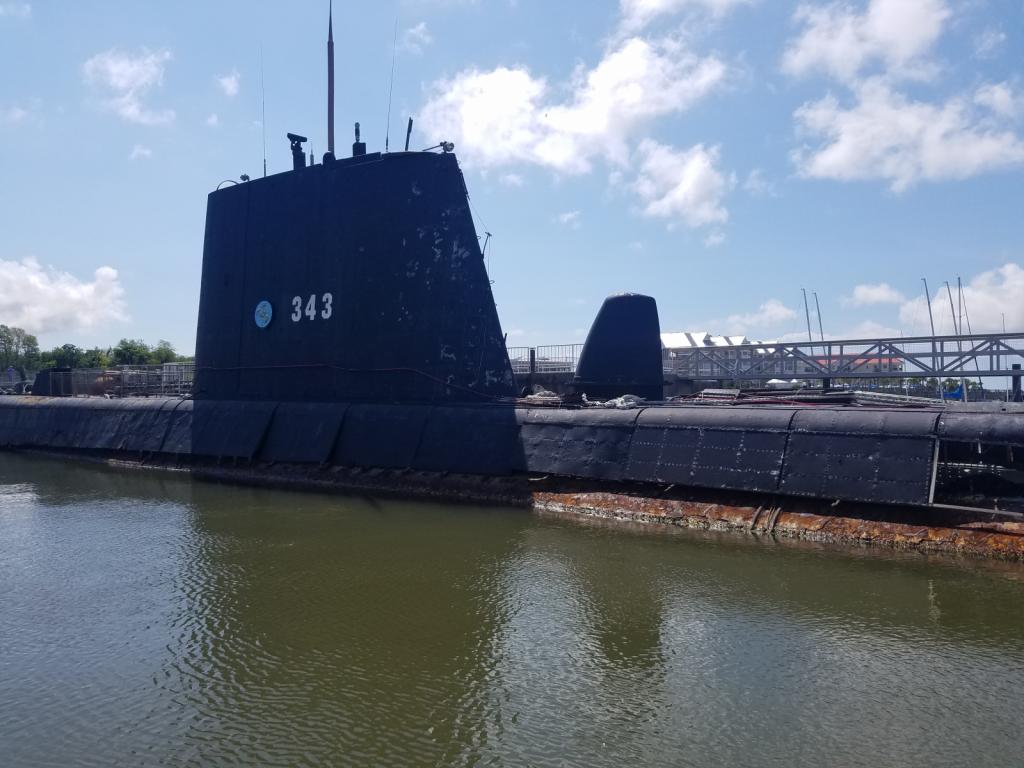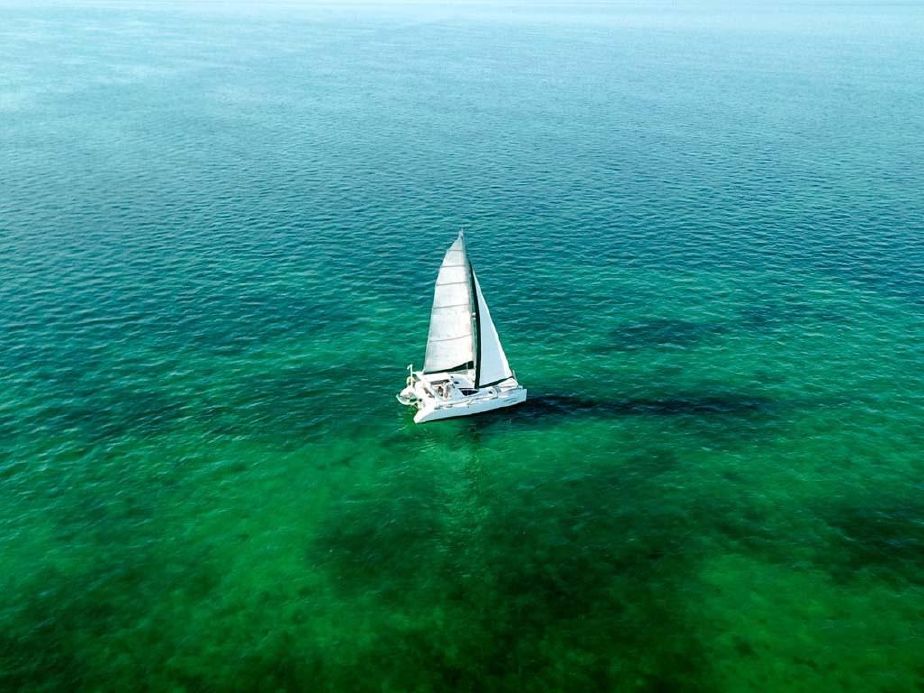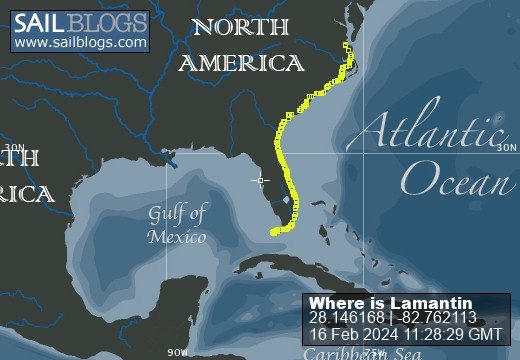
Alexi and Bob Sail Away
10 April 2022
24 February 2022
12 January 2022
20 October 2021 | Moving South
23 September 2021
02 August 2021
02 June 2021
19 May 2021
25 April 2021
08 April 2021
08 April 2021
15 February 2021
19 January 2021 | Marathon
02 January 2021
19 November 2020
17 November 2020
16 October 2020
31 August 2020 | Deltaville
13 July 2020
20 June 2020 | Portsmouth, VA
Warp Speed Ahead
17 November 2020
Robert Malkin
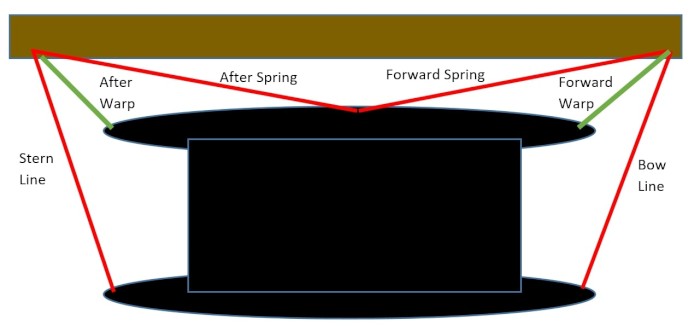
Alexi and I started cruising on a monohull. We really enjoyed that but eventually decided we preferred a catamaran (two-hulled boat). There were many things that we needed to get used to when we switched. Most catamarans are much wider (beamier) than monohulls. That means they need more room to maneuver near a dock. But, they often have two engines that are spaced very far apart, making them nimbler in close quarters.
We also quickly learned that the approach we used for selecting dock lines for the monohull was not going to work for our catamaran.
Monohull cruisers often carry dock lines that are one-half to two-thirds the length of their boat. That makes a lot of sense. A monohull approaching a marina for the night is typically assigned a slip that is about fifteen wide. A 20-foot dock line is all they need. And, that's about one-half to two-thirds the length of a typical 30- to 40-foot monohull.
But, we are never given a 15-foot slip when we approach. In fact, we rarely get a slip at all. In most cases, we are on a T-head, side tied. For a side tie, you need at least four lines. Bow and stern lines cross the boat from the hull farthest from the dock (they are shown in red to the far right and far left of the picture). Forward and after spring lines run parallel to the boat and keep the boat from moving back and forth along the dock. For most catamarans, the spring lines are deployed from midship cleats on the hull nearest to the dock. But, they can also be used from the bow and stern.
This arrangement can tolerate changes in current and tide. And, with fenders in place, the stern line can be tightened to bring the swim platform up against the dock.
Most catamarans are about twice as long as they are wide. So, a forty-foot long catamaran is about 20-feet wide. Now, that same 20 foot line that worked so well for the monohull won't even reach the dock from the far hull! It is worthless. Even a thirty-foot line may not be enough if the cleat is far forward.
At first, this problem seems to have a simple solution. Use longer lines. For example, we use spring lines that are about the width of the boat (25 feet) and bow and stern lines that are about the length of the boat (35 feet). That's 50-100% longer than recommended but works really well in nearly every situation. We've been using these line lengths for years in our home slips and as we cruise. But, there is a problem.
Lines that are long enough to dock and thick enough to secure a large catamaran with a lot of windage are cumbersome and heavy to pass and toss during the hectic moments approaching a new dock in a new city with a tricky wind or current. A wet, 35-foot, ¾" nylon dock line can weight 30 or 40 pounds!
So solve this problem, we use warps. In other words, we have two sets of lines: maneuvering lines (warps) for getting into position and dock lines for holding us there.
The way it works is this. We go for a forward (bow) spring warp first (green line to right). That means that the mate is standing on the bow with a relatively short (about 20-foot), lightweight (about 3/8") line cleated to our bow (the warp). As we approach the dock upwind or current, she decides if she is going to toss the warp, hand it to someone, or add a bowline and hook a cleat or pole. Once the warp is made fast on the dock, I can use the engines, current or wind to bring the boat alongside the dock. Occasionally, we prefer to back up to the dock, in which case we do the same procedure with the mate on the stern holding an after (stern) spring warp (green line to the left).
If we are going to stay for a just a few minutes (a fuel dock), we leave the warps in place. Otherwise, once we are alongside, we will set our thick (and much longer than recommended) dock lines.
Perhaps it is clumsy to carry two sets: dock lines and warps. But, the ability to use short, light lines to quickly adapt to a pole, a cleat -- or a person on shore who does not really know the difference - is worth a few extra feet of line. And bonus: we look super-salty with lots of lines hanging around the boat!
We also quickly learned that the approach we used for selecting dock lines for the monohull was not going to work for our catamaran.
Monohull cruisers often carry dock lines that are one-half to two-thirds the length of their boat. That makes a lot of sense. A monohull approaching a marina for the night is typically assigned a slip that is about fifteen wide. A 20-foot dock line is all they need. And, that's about one-half to two-thirds the length of a typical 30- to 40-foot monohull.
But, we are never given a 15-foot slip when we approach. In fact, we rarely get a slip at all. In most cases, we are on a T-head, side tied. For a side tie, you need at least four lines. Bow and stern lines cross the boat from the hull farthest from the dock (they are shown in red to the far right and far left of the picture). Forward and after spring lines run parallel to the boat and keep the boat from moving back and forth along the dock. For most catamarans, the spring lines are deployed from midship cleats on the hull nearest to the dock. But, they can also be used from the bow and stern.
This arrangement can tolerate changes in current and tide. And, with fenders in place, the stern line can be tightened to bring the swim platform up against the dock.
Most catamarans are about twice as long as they are wide. So, a forty-foot long catamaran is about 20-feet wide. Now, that same 20 foot line that worked so well for the monohull won't even reach the dock from the far hull! It is worthless. Even a thirty-foot line may not be enough if the cleat is far forward.
At first, this problem seems to have a simple solution. Use longer lines. For example, we use spring lines that are about the width of the boat (25 feet) and bow and stern lines that are about the length of the boat (35 feet). That's 50-100% longer than recommended but works really well in nearly every situation. We've been using these line lengths for years in our home slips and as we cruise. But, there is a problem.
Lines that are long enough to dock and thick enough to secure a large catamaran with a lot of windage are cumbersome and heavy to pass and toss during the hectic moments approaching a new dock in a new city with a tricky wind or current. A wet, 35-foot, ¾" nylon dock line can weight 30 or 40 pounds!
So solve this problem, we use warps. In other words, we have two sets of lines: maneuvering lines (warps) for getting into position and dock lines for holding us there.
The way it works is this. We go for a forward (bow) spring warp first (green line to right). That means that the mate is standing on the bow with a relatively short (about 20-foot), lightweight (about 3/8") line cleated to our bow (the warp). As we approach the dock upwind or current, she decides if she is going to toss the warp, hand it to someone, or add a bowline and hook a cleat or pole. Once the warp is made fast on the dock, I can use the engines, current or wind to bring the boat alongside the dock. Occasionally, we prefer to back up to the dock, in which case we do the same procedure with the mate on the stern holding an after (stern) spring warp (green line to the left).
If we are going to stay for a just a few minutes (a fuel dock), we leave the warps in place. Otherwise, once we are alongside, we will set our thick (and much longer than recommended) dock lines.
Perhaps it is clumsy to carry two sets: dock lines and warps. But, the ability to use short, light lines to quickly adapt to a pole, a cleat -- or a person on shore who does not really know the difference - is worth a few extra feet of line. And bonus: we look super-salty with lots of lines hanging around the boat!
Comments
| Vessel Name: | Lamantin |
| Vessel Make/Model: | Silverton 372 |
| Hailing Port: | Wilmington, NC |
| Crew: | Alexi and Bob |
| About: | We are taking a few years to live aboard our boat and visit some amazing places. |
| Extra: | Let us know if you want to come visit! |
Lamantin's Photos - Main
 |
Sights of us moving from the upper Chesapeake to FL in the fall of 2021
4 Photos
Created 20 October 2021
|
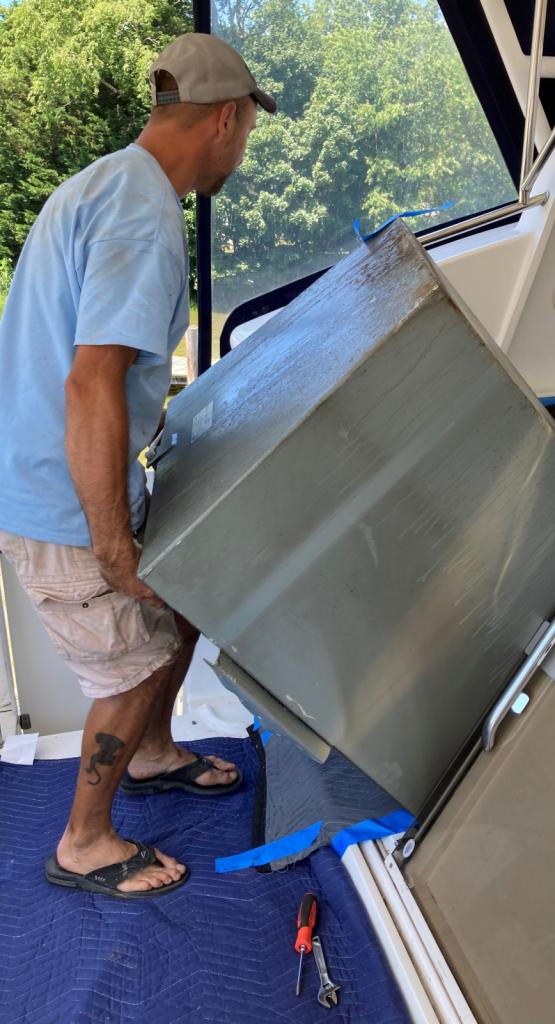 |
It is a huge job to replace the fuel tanks on a boat. Fortunately, they last about 20-25 years. So, we are not likely to ever do this again.
6 Photos
Created 2 August 2021
|
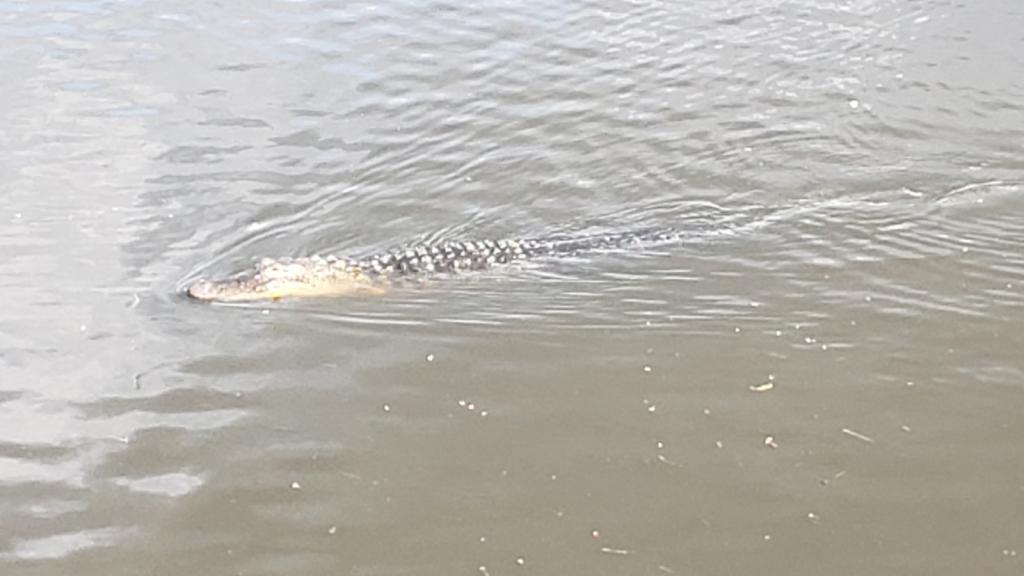 |
Photos from our trip from Florida to Rhode Island in the spring of 2021
2 Photos
Created 19 May 2021
|
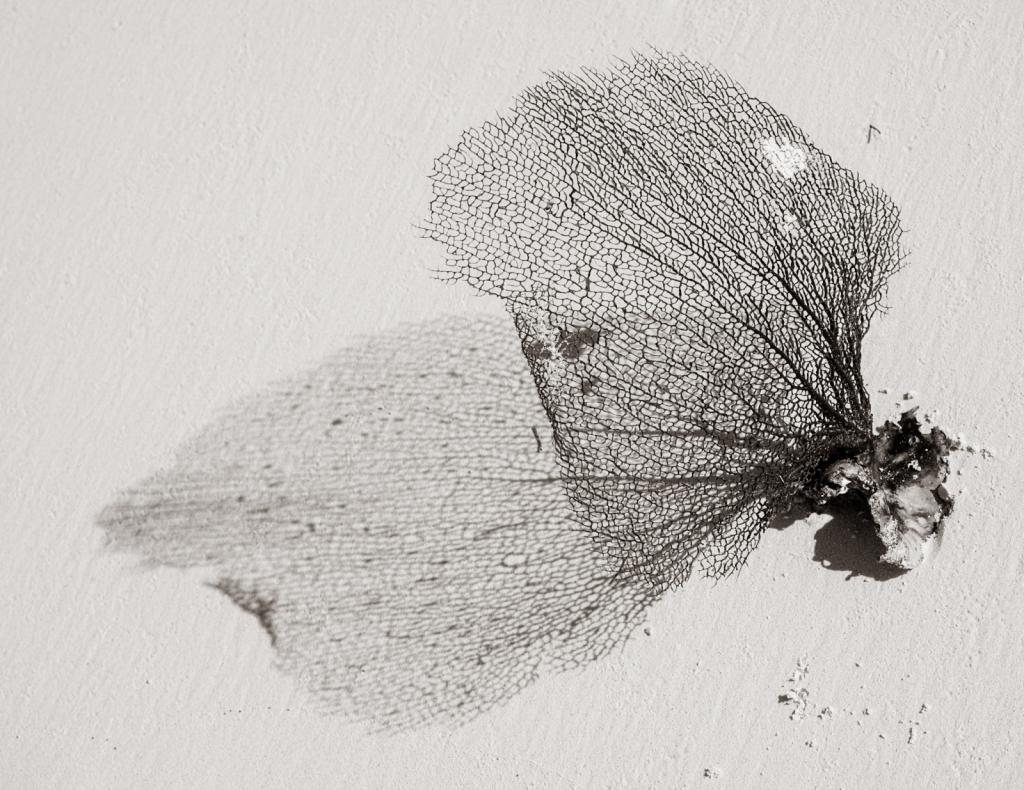 |
We had two great weeks of friends and family visiting us on the boat on Great Exuma Island
18 Photos
Created 8 March 2020
|
|
The Exumas is a long chain of islands with many remote and beautiful spots to drop an anchor
39 Photos
Created 19 January 2020
|
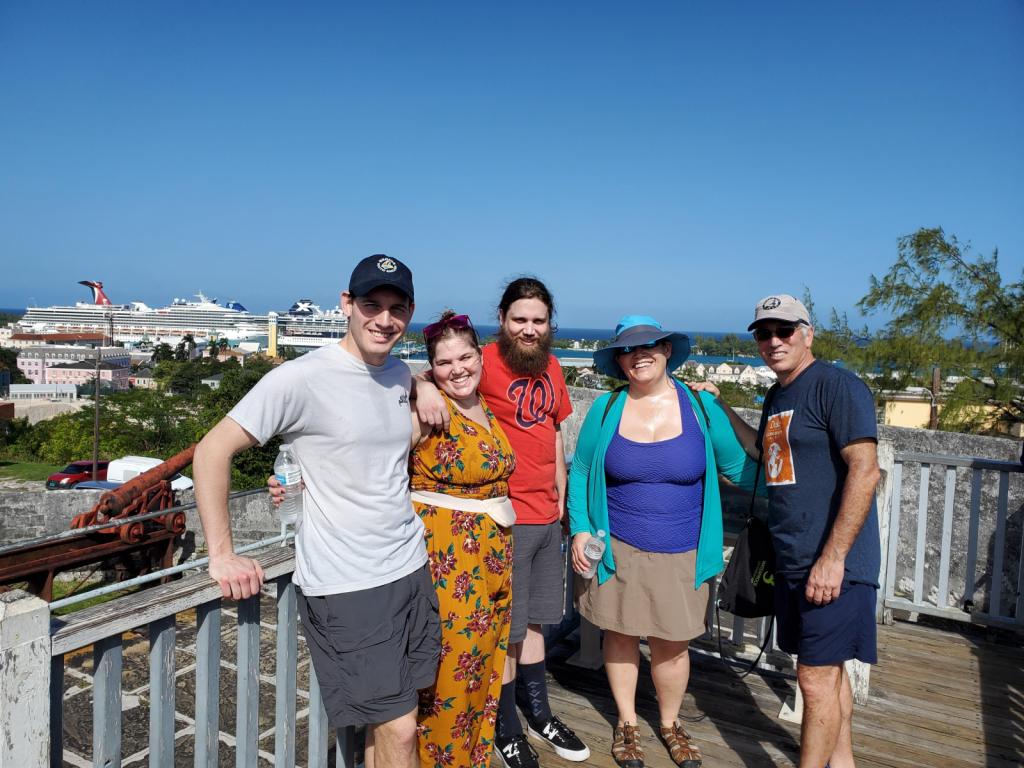 |
We had a great New Year's vacation with our children and friends in the Bahamas
27 Photos
Created 10 January 2020
|
Alexi and Bob Sail Away
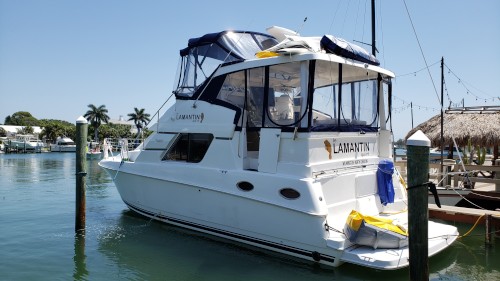
Who: Alexi and Bob
Port: Wilmington, NC
